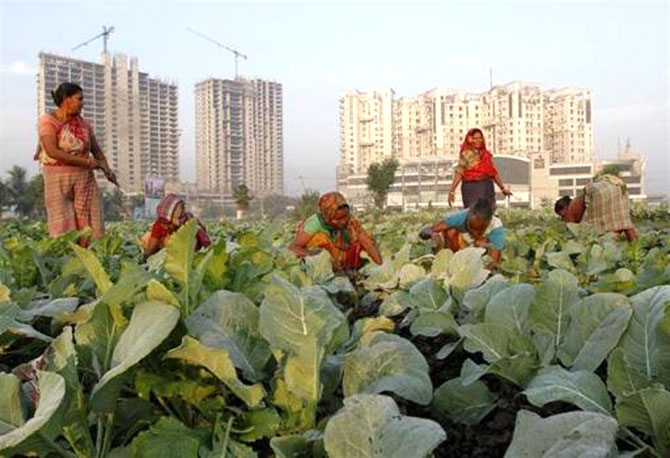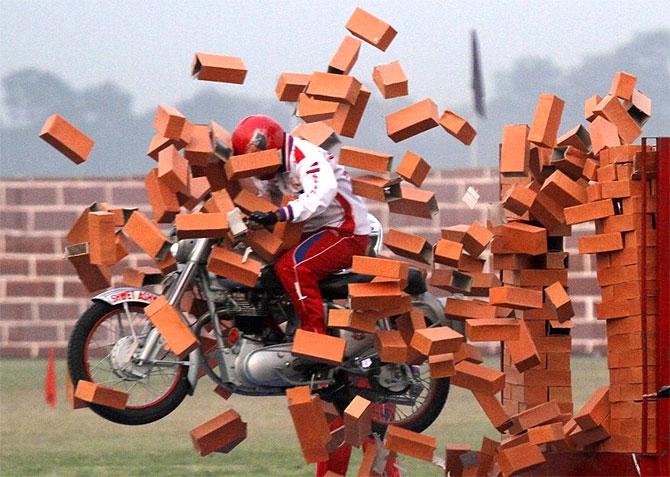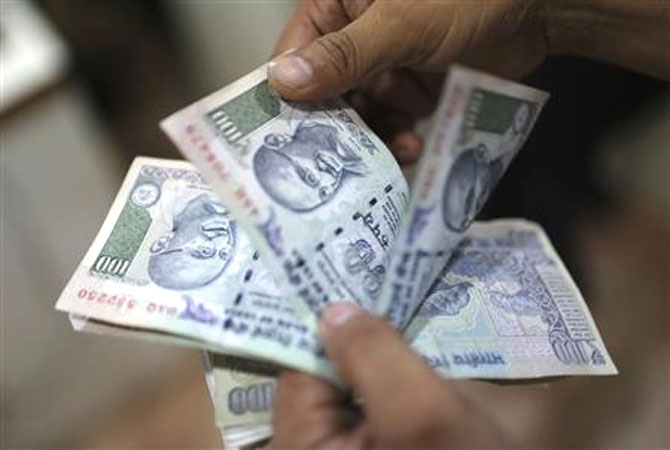Photographs: Reuters Business Standard
CRISIL’s Core Inflation Indicator, an alternative measure for core inflation which is calculated by removing metals from manufactured articles, also rose to 3.4 per cent in March from three per cent in February.
Wholesale Price index-based inflation rose sharply to 5.7 per cent in March from 4.7 per cent in February.
The rise was broad-based, with inflation in all three categories -- food, fuel and manufactured articles -- rising simultaneously.
Primary food inflation edged up to 9.9 per cent in March from 8.1 per cent in the previous month due to higher inflation in vegetables, fruit and milk.
Fuel inflation also rose nearly 2.5 percentage points to 11.2 per cent due to a sharp increase in LPG prices compared to the same time last year.
. . .
Why is the inflation northbound again?
Image: The Indian economy grew 4.7 per cent in the third quarter of this financial year.Photographs: Reuters
Core inflation, a measure of demand-side pressure on prices also rose sharply in March.
Non-food manufacturing inflation, the Reserve Bank of India’s measure of core inflation, rose to a one-year high of 3.5 per cent in March.
CRISIL’s Core Inflation Indicator, an alternative measure for core inflation which is calculated by removing metals from manufactured articles, also rose to 3.4 per cent in March from three per cent in February.
Unlike in RBI’s measure of core inflation, CCII includes manufactured or processed food prices, as these reflect second-round impact of inflation in primary food articles and, therefore, capture domestic demand-side pressures in the economy.
. . .
Why is the inflation northbound again?
Image: The Reserve Bank factors in both retail and wholesale price-based inflation data in its monetary policy.Photographs: Reuters
As primary food inflation has been in double-digits in eight of the previous 10 months, manufacturers are beginning to pass on some of the cost rise to consumers despite weak demand.
As a result, manufactured food inflation rose to 1.9 per cent in March from 0.9 per cent last month.
CCII, however, was lower than non-food manufacturing inflation as it excludes metals, prices of which are influenced by changing global demand-supply dynamics, and volatility in exchange rate, rather than domestic demand alone.
With gradual global recovery, metal prices are rising fast, pushing up non-food manufacturing inflation.
. . .
Why is the inflation northbound again?
Image: An increase in metal prices driven by global recovery and an uptick in inflation in other manufactured products is likely to push up non-food manufacturing inflation.Photographs: Reuters
Basic metals inflation rose to 1.7 per cent in March from 0.9 per cent in February. However, rising metal prices do not reflect continued weakness in domestic demand pressures
An increase in metal prices driven by global recovery and an uptick in inflation in other manufactured products is likely to push up non-food manufacturing inflation.
However, the pick-up in CCII is likely to be limited as domestic demand conditions remain relatively weak.
The upside to CCII might thus be lesser, as it excludes metals.
. . .






article